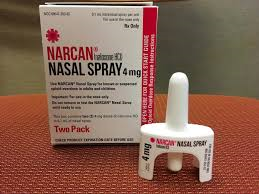|
The rise in both fatal opioid overdoses and suicide deaths has fueled interest in the extent to which the two public health issues are correlated. After re-evaluating the poisoning deaths classified as undetermined intent, a recent study published in JAMA Network shows that 21 percent may be misclassified suicides. Prior to this, it had been assumed that about a quarter of opioid-involved deaths are intentional.
Further results show that in 2015 there were more than 47,500 opioid deaths, excluding homicides. This equated to about 43,000 unintentional deaths, about 1,900 suicides, and more than 2,500 undetermined deaths. Suicide decedents tended to be older white females.
From 2000 to 2017, opioid-related deaths per 100,000 persons increased from 2.2 to 13.21 for unintentional deaths, and from 0.27 to 0.58 for suicides. The study says recent increases in overdose deaths involving heroin and nonmethadone synthetic opioids, including fentanyl, likely contributed to these trends. After this evaluation, it was determined that these opioid overdose deaths and suicides do not appear to be closely related. It is possible that the national increase in suicides may be partly linked to increasing opioid overdose deaths.
As opioid-related overdose numbers climbed in recent years there was a shift in focus for experts in the drug overdose prevention field. Methamphetamine concerns were lessened as the spotlight turned to prescribing rates of pain medications, drugs becoming laced with synthetic opioids, other, more potent substances coming into the mix.
According to the article, all of these factors played a role in the silent increase of meth use across the state. Data released by the Howard County Jail in north central Indiana displays the increase in meth-related charges from 243 in 2016 to 407 in 2018. Information provided by Community Howard Regional Health in Kokomo also showed an increase in the use of methamphetamine by those with substance use disorder seeking treatment.
 |
The implementation of Indiana Code 16-42-27 in 2016, commonly known as Aaron’s Law, allowed the overdose-reversal drug to be distributed to the public without a prescription. Indiana pharmacies began working to stock more doses of naloxone. Researchers at Prevention Insights at the IU School of Public Health Bloomington have determined a large increase in communities providing naloxone. The study was published in the Journal of the American Pharmacists Association and found that Indiana pharmacies stock 57 percent more of the opioid reversal drug than they did in 2016. Naloxone dispensation increased from 23 percent in 2016 to 76 percent in 2018.
IU’s research team is now working with pharmacists and pharmacies to develop new ways to encourage individuals to obtain naloxone at Hoosier pharmacies.
|